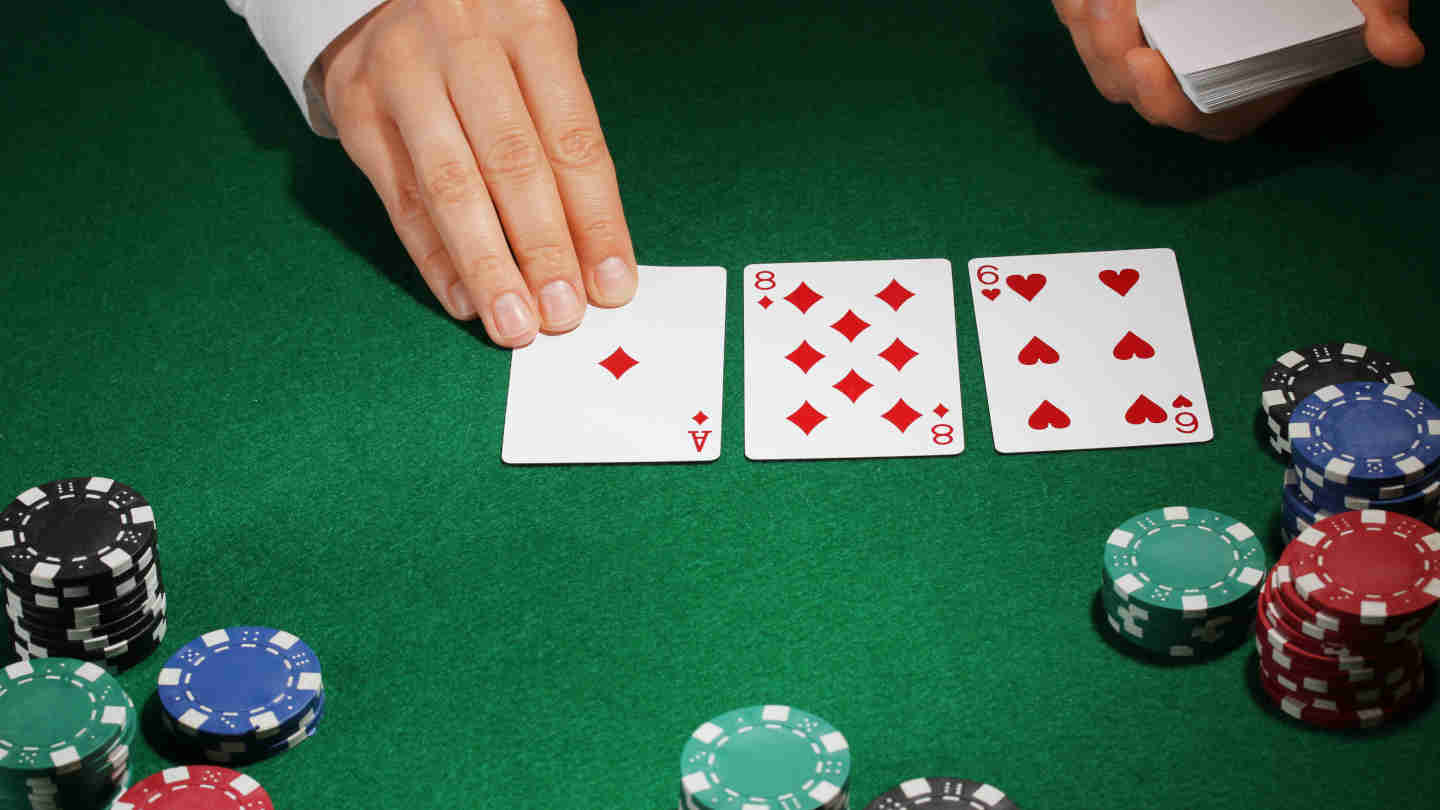3-Bet Poker Strategy – What Is Three Betting In Poker?

8 minutes
Aggression is one of the most important concepts in poker and this makes the 3-bet an essential tool in every poker player’s kit.
So what is a 3 bet in poker?
In poker, this a term used to describe the first re-raise before the flop, but it can also be used for the first re-raise after the flop.
In this text we are going to explain the most important things you need to know about three-betting and the poker three-bet.
What Is a 3-bet?
When talking about the 3-bet, poker players usually refer to the first re-raise made before the flop, although the same term is also used for the first re-raise after the flop.
Here is an example of a pre-flop 3 bet:
Let’s say you are playing $5/$10 No Limit Hold’em, and the UTG player makes a raise to $25. The HJ folds and the CO player makes a re-raise to $70.
The bets made in this hand are categorized in the following way:
- The blinds are considered the first bet
- The UTG player’s raise is considered the second bet
- The CO’s re-raise is considered the third bet
This means that in this hand the CO’s re-raise is categorized as a 3-bet.
Why Do Poker Players 3-Bet?
3-betting is a powerful tool that can be used for a variety of strategic reasons in poker:
- 3-betting for value
- 3-betting as a bluff
- 3-betting to isolate opponents
3-Betting for Value in Poker

If a player 3-bets to put as much money in the pot as possible, believing he has a better poker hand than his opponent, this is considered a value 3-bet.
For example, imagine that you are playing Texas Hold’em, and one of the players that acted before you made a raise. You are holding pocket Kings and you decide to make a 3-bet.
This is a classic example of a 3-bet for value. At this point in the hand, you strongly believe that your pocket kings are stronger than the hand your opponent made a raise with.
3-Betting as a Bluff in Poker
If a poker player thinks that he does not have a better hand than his opponents but wants to make them fold and take the pot down, then he is 3-betting as a bluff.
Imagine a hand in which the UTG player made a raise, and you have A♠5♠ on the button. You are pretty sure that the UTG player has you beat since his range from that position is much stronger than yours.
However, you still believe that he will fold against your re-raise a fair amount of the time, so you 3-bet him.
In this situation, you are 3-betting as a bluff, since you know that the UTG’s range is much stronger than yours.
3-Betting to Isolate Opponents
If the aim of a 3-bet is to get a call from one opponent and push others out of the hand, this is known as an isolation 3-bet
For example, the UTG player makes a raise and the CO calls. You are on the Button. You know that the UTG player is a competent opponent and that the CO is a weaker player.
You make a 3-bet trying to make the UTG player fold and the CO player call because you believe that you have the advantage against the CO player if you go heads up to the flop. So, your goal is to isolate one particular player in this hand.
Types of 3-bet Ranges in Poker

Different players construct their 3-betting ranges differently depending on their experience, skills, and style of play. However, most of these 3-betting ranges belong to one of two categories:
- Polarized 3-betting range
- Merged 3-betting range
A Polarized 3-Betting Range
If a player’s 3-betting range mostly consists of strong hands but also has some weaker hands in it, this is called a polarized 3-betting range.
For example, if a player 3-bets his strongest hands such as AA, KK, QQ, etc. but also some weaker hands that have a lot of post-flop poker equity and playability such as JTs, T9s, or 89s, he is using a polarized range.
Merged 3-Betting Range
If a player’s 3-betting range consists only of premium hands in the top five or six percent of all hands., this is known as a merged 3-betting range.
An example of a merged range would be someone only 3-betting TT+ and AQ+ and then including the next few best hands on the hand chart.
Adjusting 3-Betting Ranges Based on the Opponent Type

If you are serious about poker, you should construct your 3-betting ranges during your study sessions. This way, you will know what hands you 3-bet and from which positions.
However, one of the most important traits of good poker players is their ability to read the situation and adjust, and this applies to 3-bets as well.
What we mean by this is that you should use the ranges you constructed to determine what you will 3-bet and in which situation.
However, you should also be ready to adjust them based on the situation and the player type.
For example, if you are playing against an opponent who does not like to fold, you should be 3-betting him mostly with your value hands (merged range) and avoid trying to 3-bet bluff him.
On the other hand, if you are playing against an opponent who over-folds to 3-bets, lean towards expanding your bluff 3-betting range.
Finally, against competent opponents, you should be going with a polarized 3-betting range that contains both value hands and bluffs so that you keep them guessing whether you are re-raising for value or as a bluff every time you make a 3-bet.
How to Size a 3-Bet
There are a few factors that you should take into account when sizing your 3-bet such as:
- Position
- Effective stack
How Position Impacts the Size of a 3-Bet
As a general rule of thumb, you should use larger a 3-bet sizing when you are out of position and a smaller one when you are in position.
The reason you should lean towards a bigger 3-betting size when out of position is to make up for the positional disadvantage you are in by giving your opponent a worse price on a call.
In other words, using a larger sizing before the flop lowers the stack-to-pot ratio after the flop and minimizes positional disadvantage.
When you are in position, you should use smaller 3-bet sizing to give your opponent a better price on a call, since you will have the positional advantage after the flop. A smaller 3-bet sizing increases the stack-to-pot ratio after the flop and maximizes your positional advantage.
Example 1
The effective stack is 100bb and the button opens to 2bb. You want to 3-bet them from the SB. In this situation, the size of your 3-bet should be anywhere from 3.5x to 4.5x i.e. between 7bb and 9bb.
You are doing this as you will be out of position for the remainder of the hand if the button decides to continue against your 3-bet, so you don’t want to give them a good price on the call.
Example 2
The effective stack is 100 bb, UTG opens to 2bb, and you want to 3-bet him from the CO. In this scenario, the size of your 3-bet should be anywhere from 2.5x to 3.5x or from 5bb to 7 bb. You will be in position for the remainder of the hand if the UTG decides to call your 3-bet.
How the Size of the Effective Stack Impacts the Size of a 3-bet

The rule for choosing a 3-bet size based on the size of the effective stack is pretty simple. The smaller the effective stack, the smaller your 3-bet should be. So what does a “smaller” effective stack mean in practice?
Well, in cash games, most players play with at least 100bb (like in our previous examples), so we will use this stack size as a starting point.
Most poker players will start increasing their default 3-betting sizes when the effective stack reaches around 120bb.
The reason why you should be increasing the bet size as the stack gets deeper is so that you can maintain the same stack-to-pot ratio that you have when the effective stack sizes are around 100bb.
In other words, when you have a value hand, you can put all the money in the pot by the river without having to make any big adjustments to your post-flop bets.
The same applies the other way around. When the effective stack drops down to around 80bb, you should start decreasing the size of your 3-bet to maintain the stack-to-pot ratio that you have when the effective stack size is around 100bb.
By doing this, you are ensuring you have enough chips left in the stack on the flop to avoid being committed.
Example 1
The effective stack is 200bb, the Button opens to 2bb, and you want to 3-bet him from the SB. In this situation, the size of your 3-bet should be anywhere from 4.5x to 5.5x.
By doing, you will be able to put all the money in the pot by the river the same way you would if the effective stack was 100bb.
The reason why you should keep this stack-to-pot ratio is so that you can have an easier time putting all the money in the pot with your value hands.
Example 2
The effective stack size is 30bb, UTG opens to 2bb, and you want to 2-bet him from the CO. In this scenario, the size of your 2-bet should be around 2.1x or 2.2x (from 4.2bb to 4.4bb) so that you avoid being committed on the flop if the UTG player decides to call your 3-bet.
The reason why you should avoid being committed on the flop in these situations is so that you can have bluffs in your range that you can give up on unfavorable flops.
Final Thoughts on the 3-bet in Poker
A 3-bet is the third bet that increases the size of the active bet before the flop. There are three main reasons why poker players 3-bet: for value, as a bluff, and to isolate weak opponents.
The two main types of 3-betting ranges in poker are the polarized and the merged 3-betting range.
The standard size for a 3-bet when the effective stack is 100bb is around 2.5x to 3.5x in position and from 3.5x to 4.5x out of position.
If the effective stack is lower the size of the 3-bet should be decreased and if the effective stack is bigger than 100bb, the size of the 3-bet should be increased to keep the stack-to-pot ratio relatively the same.
- Poker Squeeze Play – Which Hands Make the Most Sense for Squeezing? - August 10, 2023
- How to Play Low Pocket Pairs in Texas Hold’em - July 29, 2023
- How to Make Deep Runs in MTTs More Often - July 22, 2023















